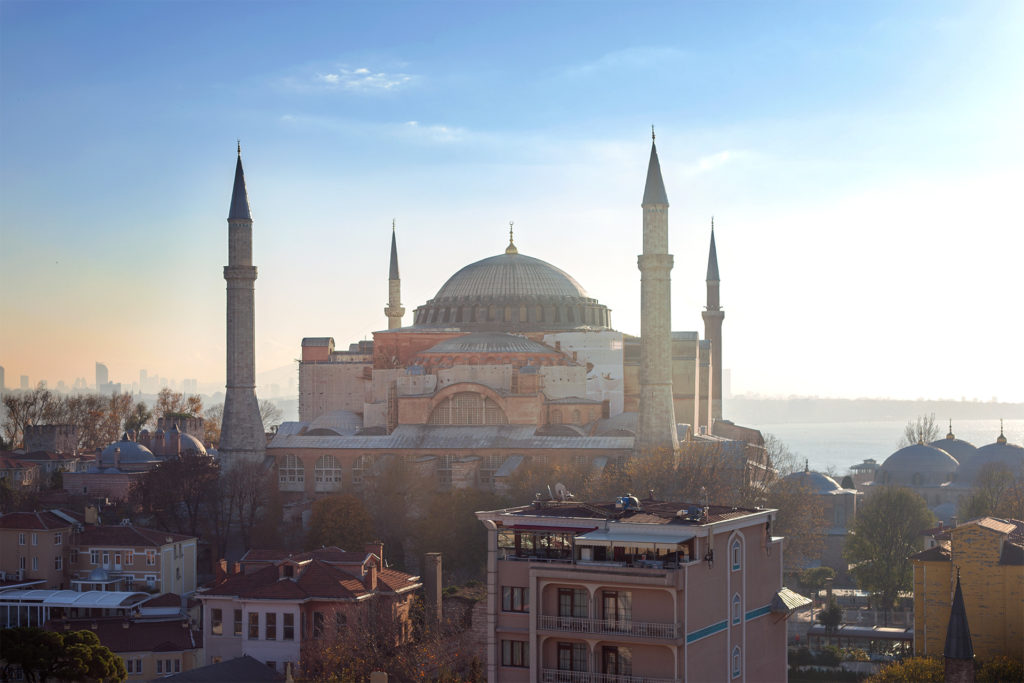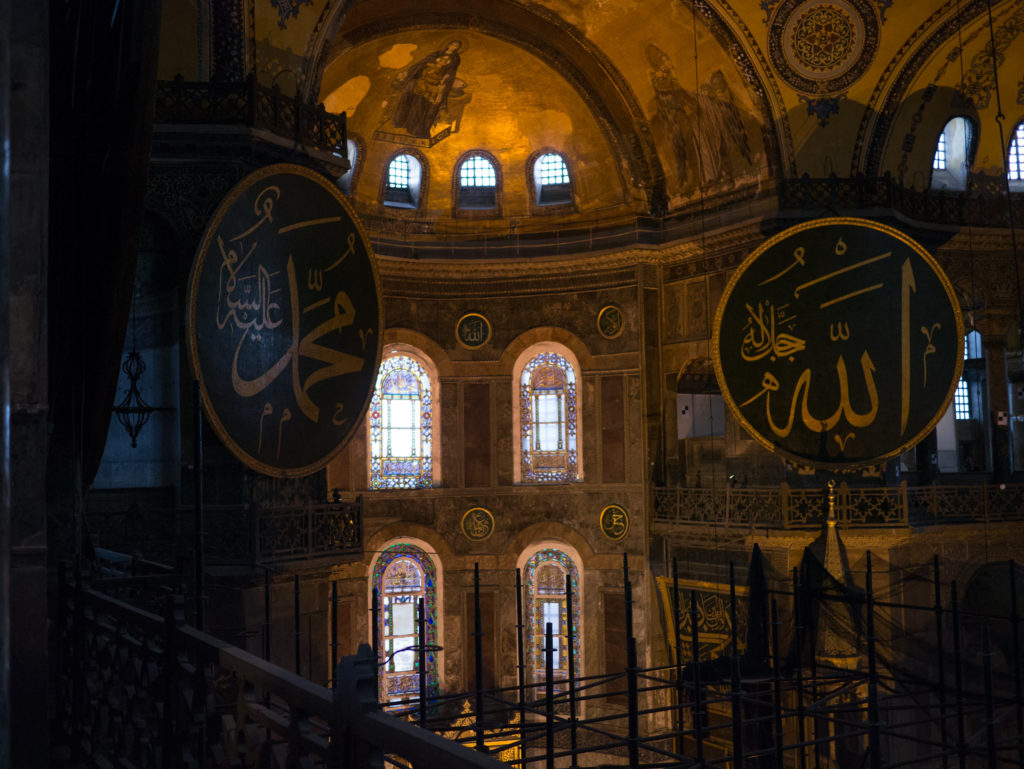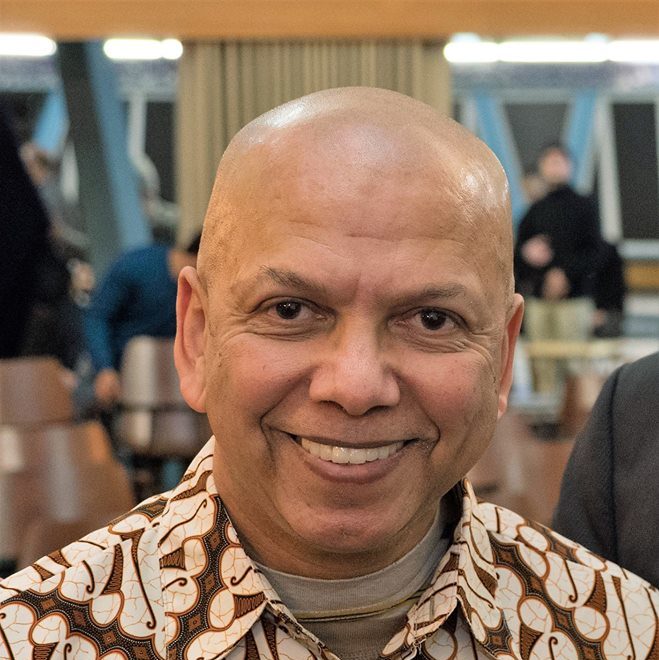
Hagia Sophia is not the symbol of any religion, but a symbol of class. It is the temple of kings and sultans. This has always been the nature of it. It was demolished twice following massive popular revolts. There is sweat, blood and tears of slaves in its foundation. No Prophet would ever set foot in there.
The recent decision by the Turkish Council of State and the President to revert the Hagia Sophia into a mosque has garnered much debate across the Muslim world. On the one hand, there are many, both in and outside of Turkey, who support the decision. Some who support the decision argue that the issue is one primarily concerning Turkish national sovereignty. Others may additionally frame it as a popular Islamist correction to the historical wrong committed by secular Kemalists, who changed the Hagia Sophia from a mosque to a museum. On the other hand, there are those who argue that what motivates the decision is President Erdogan’s narrow populist party political agenda, which is fundamentally opposed to the modern liberal secular notions of religious and ethnic pluralism. The Hagia Sophia has been a contested site for over a millennium, and plays an important symbolic role in how the histories of imperial Byzantine and Ottoman civilizations are remembered in the present.
While these two groups have played important roles in the debate, there is a more fundamental tension at play, particularly for Christians and Muslims who are dedicated to radical understandings of their faiths based on a shared tradition of a liberatory, prophetic critique of materialism and power. Given both the damage and supremacy of modern liberalism and secularism in the Islamicate world, we should fundamentally affirm Muslims’ and Christians’ right and responsibility to build power through religiously inspired lenses and frameworks. That being said, we must always ask: Which religious lenses and whose frameworks? Is this the Christianity of Emperor Constantine or that of Jesus and his flock of radicals? In the words of `Ali Shari`ati (1958–1977), “It is not sufficient to say that we must return to Islam. We must specify which Islam: That of Abu Zarr or that of Marwan, the ruler […] One is the Islam of Caliphate, of the palace, and of rulers. The other is the Islam of the people, of the exploited, and of the poor.”
As Turkish Muslim political dissident Ihsan Eliacik suggests above, the Hagia Sophia is currently neither a symbol nor a sign of prophetic ethos and power for Christians or Muslims. Why do we need to pray in a building as grandiose as the Hagia Sophia (whether as Christians or Muslims or otherwise)? Eliacik suggests we listen to the blood, sweat, and tears in those walls before thinking that Prophets would even set foot in such a place to worship God. The massive and excessive frescos and calligraphy, columns and domes, and marble and minarets say far more about the place as an aristocratic symbol—as a symbol of the accumulation of wealth and religio-ethnic imperialism—than anything about a God of Justice and Mercy. Jesus’s church was the dirt roads and streets of Palestine, and Muhammad’s mosque was made of clay and palm trees. Can we seriously imagine Jesus or Muhammad being enamored by their followers fighting over a bombastic display of material power and wealth? Muslims and Christians continue to play the same game that our Prophets and Creator taught us to be more critical of and urged us to undermine—even to destroy. In this drama around Hagia Sophia, we worship a religion that is against religion, in the name of religion!
Both Islam and Christianity become further unmoored from their radical origins and potential when their sultans, caliphs, popes, and monarchs become obsessed with constructing palaces, monuments, and symbols of unethical power in the name of their religion—ostensibly to the Glory of God, but actually to the god of the nafs (lower self) of these glorified and glory-seeking leaders.
Historically, this large-scale hijacking first occurred in the 4th century of Christianity in Constantinople and in the first century of Islam in Damascus. (Some Muslims would argue that it started much earlier when some among the Companions of the Prophet already had enriched themselves with war booty and begun to practice nepotism, both leading to the bitter remonstrations against the accumulation of wealth and displays of ostentation by the Companion Abu Dharr al-Ghiffari [d. 652]).
The radical message of Prophets is primarily two-fold:
(A) Contrary to the “Islam is peace” discourse of the “moderate Muslims,” to relentlessly attack tyranny and to destabilize—or “render ungovernable,” as we said during the years of the struggle against South African Apartheid—unjust orders, and
(B) to seek justice for all on the margins of society and strive to establish just socio-political orders inspired by our sacred sources.
Rulers should not live extravagant lifestyles, nor should their symbols of sovereignty represent the gross accumulation of wealth and power. They should always do their best to stick to the earthly (not to mention ecologically friendly) and humble homes of those who follow the eternal path of righteous guidance.
Thus, we constantly have to return to asking ourselves: Are we following Jesus, or Emperor Constantine? Are we following Muhammad, or the murderers of his family and prophetic tradition?
Would we rather have a palace in Damascus and Constantinople? Or a humble abode in this life which causes less damage, and benefits us multifold in the Hereafter when our palaces and palatial temples—as all earthly constructions—lie in ruins and the Transcendent weighs our righteousness on the scales?

These are the questions we must honestly and critically ask ourselves when the names and symbols of our religions start to get hijacked by “non-idolatrous” idolaters. Outward displays of piety and ethno-religious supremacy have been critiqued as hidden forms of idolatry by the Holy Books and Prophets for a long time. Many of us worship an Islam or Christianity that is cloaked in much more than the otherwise sincere commitment to grappling with existence and attempting to understand what we should be doing while on earth as sojourners returning to the Transcendent.
In Islam, a place of worship of is called a ‘masjid, a place of prostration. Here we are expected to tremble in the presence of the Transcendent, not exult in the glory of a narrow ethnic national chauvinism masquerading as Islam, nor to pay homage to the sultan of the day. Neither the fact that others—the Greeks, the Armenians, the Spanish or whoever else—may have done this to us, nor that those crimes continue against former symbols of the Islamicate, provide us with a license to do this to others.
The suggestion by Sahak Maşalyan, the Patriarch of the Armenian Church of Turkey, that the Hagia Sophia be opened to all religions is an interesting one which moves beyond the pathetically bigoted “God is really a soccer or basketball mascot for the nation” discourse. “Why not keep it as a museum for part of the week and open it for an Alevi semah ritual Thursday nights, for Sunni prayers on Fridays, for the Jewish community on Saturdays, and for Christian congregations on Sundays?” he asked. “Such a transformation,” says Baki Tezcan, in another essay, “would keep the Hagia Sophia alive and better serve its long-term preservation as a cultural heritage site, offer an alternative to Islamist political hegemony, recognize Turkey’s diversity, and set an exemplary international precedent for other similar sites globally.”
The games played by the powerful and the willingness of the masses to cheer them on is not going to get humankind through the critical challenges facing all of us as inhabitants of the earth—our only home which we until recently have been destroying one brick at a time, but have now moved on to one wall at a time. Perhaps we need to go beyond Patriarch Maşalyan’s seemingly noble suggestion, which is aimed at appeasing different tribes, all of them which, again, seemingly, but only seemingly, are obsessed with their tribal deities whom they have created in their images.
I have a far-fetched proposal.
In the context of massive socio-economic inequities, ongoing ecological destruction, and rising tides of religio-ethnic supremacist ideologies in Turkey and around the world, the theological and social response of clerical or governmental leadership should not be guided by the false consciousness of narrow-minded symbolism. Why not convert the Hagia Sofia into something like a shelter for the homeless, a hospital for the sick and needy, a radical education or arts center to raise consciousness, or an indoor garden?
Regardless of how far-fetched this proposal may appear, I am convinced that Muhammad and Jesus would then be far more comfortable stepping into it than they would be if it were to be a cathedral, a museum, a temple, or a mosque.
[1] Eliacik is a Muslim theologian and activist with the Anti-Capitalist Muslims Collective in Turkey


Thank you for your refreshing perspective.
This is by far the best analysis I have read on this matter. Well said Prof Farid Esack. 👌🏻👏🏻
Brother Farid !
always Eloquent and Insightful ,
teasing our Intellect 💌🤔
Wonderful article sir.
The Hagia Sophia mosque can have a place dedicated for the homeless, a library, a reading room, an auditorium and can remain open as a museum as well. In fact, many mosques do function in some capacity on all these fronts. But you don’t have to change its status. The reversion is also symbolic apart from being real. It symbolizes that the people of the country in which this structure is, are Muslims and are proud of their faith in One Almighty God Who does not beget and is not begotten.